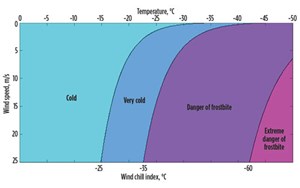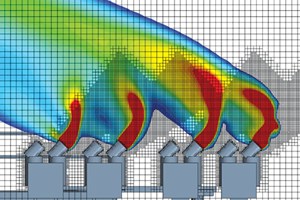Using CFD to optimize the orientation of an offshore platform
Technical safety in the offshore oil and gas industry is of paramount importance. With most tension leg platforms (TLPs) being geographically remote, costing upwards of $3.5 billion and containing a multitude of operational hazards, it is crucial to minimize the risks to people and assets. To achieve the objectives, an inherently safe design (ISD) initiative was launched, to positively influence technical design safety, from concept through to commissioning. Analyzing platform orientation plays a significant role in the ISD process, limiting adverse effects, should an incident occur.
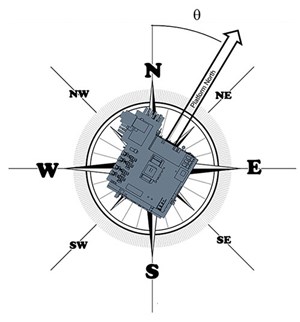
Traditionally, platform orientation has been determined by engineering judgment, heavily weighted by past experiences. While this approach initially appears to be time- and cost-effective, it has the potential to lead to non-ideal designs, which could cause safety and operational issues to go unaddressed, and increase costs in later design stages. A scientific approach was required to objectively measure the meteorological, oceanographic and mechanical factors that affect an offshore structure and its operational efficiency, independent of human experience, Fig 1.
OPTIMIZATION PARAMETERS
The parameters considered for the optimization study were as follows:
- The natural wind-induced ventilation, which can reduce the potential accumulation of toxic and flammable gases, as well as provide indications of potential vapor cloud explosion consequences.
- The helideck impairment, which can impact helicopter operations, due to hot turbine exhaust gases, affecting both general operations and potential emergency operations.
- The wind chill, which can affect the ability of personnel to work on the platform. This is particularly important in cold climates and extreme weather areas, where working conditions can influence the number of personnel required for operation.
- The lifeboat drift direction, which can impact the safety of the crew in an emergency situation.
- The hydrodynamic drag, which can affect tendon fatigue life, hull integrity, and structural design requirements.
Natural ventilation. Guidance for natural wind ventilation rates is contained in the Institute of Petroleum (IP) 15 document. In the event of an unintended hydrocarbon release, higher ventilation rates typically translate into the formation of smaller flammable gas clouds, Fig. 2. This parameter is, therefore, intended to be maximized.
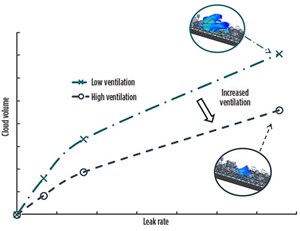
Exhaust. The Civil Aviation Protocol (CAP) 437 dictates that restrictions be put in place for the helicopter operations, if there is a temperature increase of 2°C above ambient, within the operational zone above the helideck. Temperature rise is used to define potential impairment to operations; in some cases this may limit operations altogether or require adjustments to payload weight and approach paths. For many offshore facilities, particularly in extreme weather areas, helicopters are used as the primary means of transportation and evacuation during an emergency. Thus, it is imperative that the helideck remains available through as many expected weather conditions as possible, Fig. 3. Additionally, platforms look to minimize exhaust impacts to drilling, crane and elevated deck operations. The helideck impairment from exhaust fumes is, therefore, intended to be minimized.
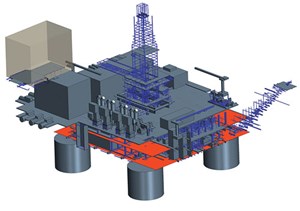
Wind chill is quantified by the perceived decrease in temperature felt by the body on exposed skin, Fig. 4. Wind chill can impact the number of personnel required to operate a facility. In some cases, environmental effects, such as wind chill, have been known to increase the potential for operator error. To provide personnel with acceptable working conditions and maximize safety, wind chill effects are intended to be minimized. It is important to note that this can be counter to increasing ventilation for the reduction of flammable clouds during an unintended release of hydrocarbons. One intent of the optimization approach is to find a balance between these two potentially competing goals.
Lifeboat drift-off. If a lifeboat is deployed during an emergency, it is imperative to maximize the potential survival of the craft by limiting exposure to potential hazards. A lifeboat deployment also may suffer from loss of power, thus left to environmental effects to reach safety. To maximize the potential for survival, the lifeboat should drift safely away from the platform, assisted by the current. Adverse drift-off, the length of time to reach a safe area, and potential drift back into the facility, should be minimized.
Tendon stress. TLP platforms are typically used in water depths reaching down to 7,000 ft, Fig. 5. To be cost-efficient and comply with the API Recommended Practice (RP) 2T, the stress in the tendons resulting from maintaining the platform in place, despite wave impact and drag loading from the current, needs to be minimized. Tendon requirements can lead to weight and structural design limitations, as well as require unnecessary buoyancy complications during operations.
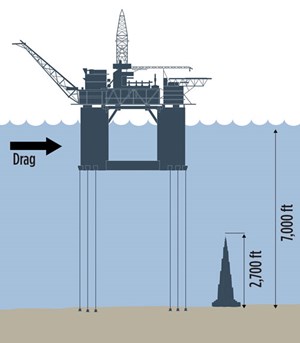
SCIENTIFIC ANALYSIS
Once the critical parameters had been identified, an analytical tool was required to solve the engineering problem. While past experience and good judgement are a starting point, numerical simulations can help make a good design even better. In his book, Expert political judgment: How good is it? How can we know?1 social scientist Philip Tetlock shows how solutions derived from formal models, such as computational fluid dynamics (CFD), consistently outperform decisions based solely on expert judgement, Fig. 6. Today, with multi-design exploration (MDX) and multi-design optimization (MDO) tools, such as HEEDS, industry professionals can utilize high-power digital analysis, once the sole domain of R&D, to produce the best designs for a specific application.
In the oil and gas industry, however, decisions relating to the platform orientation are still typically made on the basis of previous experience and qualitative judgment. This can lead to unintentional biases. This study aims to improve the accuracy of experts’ predictions through the use of numerical tools to meet the following design objectives:
- Maximize ventilation
- Minimize helideck impairment from exhaust
- Minimize wind chill effects
- Minimize tendon stress
- Minimize adverse lifeboat drift-off.
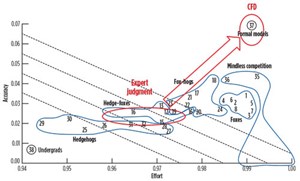
However, the use of formal models does not come without limitations. There are multiple challenges associated with using CFD to resolve issues related to offshore platforms. Offshore platforms are very large and have extremely complex geometries. This makes it difficult, if not impossible, to explicitly resolve all objects within the available time frame. From a time management standpoint, projects are strongly schedule-driven, because stakeholders want their platform to start running as early as possible, since each day of delay will cost approximately $10 million in deferred revenue.
In addition, platform orientation is one of the first design aspects to be decided. However, in early design stages, information is limited. Many uncertainties need to be sorted, such as the location of equipment and other critical logistical considerations. Finally, the budget allocation for health and safety is usually approximately 1% of the total project cost, which greatly limits the amount of influence that technical safety has in the final design.
STAR-CCM+. To solve the design challenge, engineers applied STAR-CCM+, a complete multi-disciplinary platform for the simulation of products and designs operating under real-world conditions, Fig. 7. The program is backed by a community of simulation experts, who have an established relationship with a dedicated support engineer, who understands the problems and can solicit help from a subject matter expert when required.
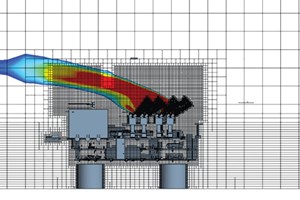
The test case would revolve around the exhaust issue and combine the other factors into the probability charts. The physics parameters used in STAR-CCM+ to represent the exhaust flow are as follows:
- Steady-state
- Two-layer, realizable, k-epsilon turbulence model
- Segregated multi-component gas model
- Gravity model to deal with the buoyancy-driven exhaust flow.
The mesh parameters were set as follows:
- Large-scale objects are resolved explicitly
- Small scale objects are represented by sub-grid drag terms
- Two to five million hexahedral cells
- Locally refined on platform and helideck
- Refined exhaust outlets, Fig. 8.
METHODOLOGY
The methodology is summarized in the table below:
Step 1: Simulate wind from 16 directions and two speeds.
Step 2: Calculate helideck impairment from exhaust for each scenario.
Sept 3: Calculate mean air speed through the platform.
Step 4: Calculate wind chill on the platform.
Step 5: Determine lifeboat drift collision probability.
Step 6: Calculate drag loading on hull as a surrogate for tendon stress.
Step 7: Combine all results using annual wind and current probability distributions.
RESULTS/RECOMMENDATION
The cost functions of the five different objectives were plotted, showing the ideal orientation from each specific perspective:
Ventilation – ideal platform north orientation aligned true north-northwest.
Exhaust – ideal platform north orientation aligned with true east, but acceptable anywhere between θ=250 and 330°.
Wind chill – ideal platform north orientation aligned true southeast.
Lifeboat drift-off – ideal platform north orientation aligned true south-southeast, although any orientation θ between 180–260° would be equally acceptable.
Tendon stress – orientation does not have any real influence on tendon stress. This result may be explained by the symmetrical nature of the platform.
The cost functions for each individual design objective were then plotted and analyzed, Fig. 9. The linearly weighted cost function for the combined objectives shows that the optimum orientation of the platform, once all objectives are taken into account, is for its north to face true east-southeast. It is interesting to note that the final result does not coincide with any of the ideal orientations found for the individual design objectives, but it represents the best compromise between all stated objectives.
FUTURE CONSIDERATIONS
The optimum orientation of the structure, with platform north facing true east-southeast, was obtained using simulation tools based on five design objectives: ventilation, exhaust, wind chill, lifeboat drift-off and tendon stress. The approach taken in this case study considers an early stage of design, with parameters covering both safety and operational issues. As the design progresses, the number of parameters considered is expected to change, as will their weighted contribution. The idea is that the orientation can be optimized further as the design process progresses or, in some cases, completely alter the selection, based on safety and operational prioritizations.
If a proper balance of previous experience, qualitative judgement, and the use of formal models, such as CFD, are deployed, this function method can be used to achieve an inherently safe design. Further work could involve optimizing the facility layout, based on turbine stack design and positioning, helideck positioning, module placement and flare tower design. ![]()
REFERENCES
- Tetlock, Philip E., “Expert political judgment: How good is it? How can we know?”, Princeton University Press, Princeton, N.J., 2005.
- Advancing offshore decarbonization through electrification of FPSOs (March 2024)
- Subsea technology- Corrosion monitoring: From failure to success (February 2024)
- Driving MPD adoption with performance-enhancing technologies (January 2024)
- Digital transformation: A breakthrough year for digitalization in the offshore sector (January 2024)
- Offshore technology: Platform design: Is the next generation of offshore platforms changing offshore energy? (December 2023)
- 2024: A policy crossroads for American offshore energy (December 2023)
- Applying ultra-deep LWD resistivity technology successfully in a SAGD operation (May 2019)
- Adoption of wireless intelligent completions advances (May 2019)
- Majors double down as takeaway crunch eases (April 2019)
- What’s new in well logging and formation evaluation (April 2019)
- Qualification of a 20,000-psi subsea BOP: A collaborative approach (February 2019)
- ConocoPhillips’ Greg Leveille sees rapid trajectory of technical advancement continuing (February 2019)

